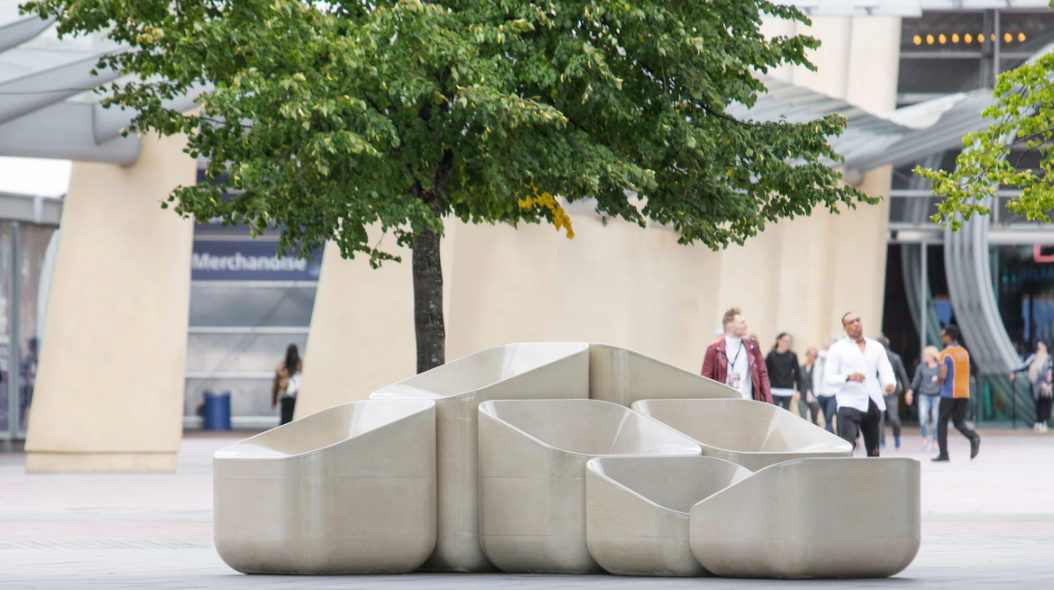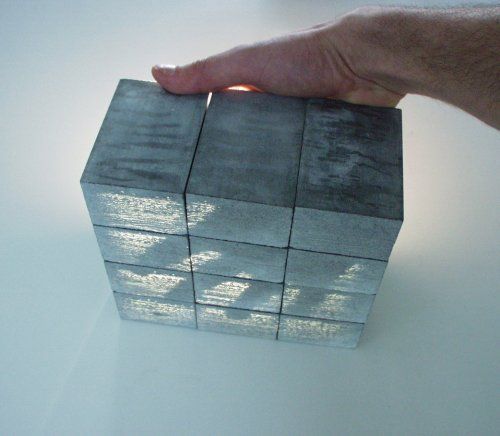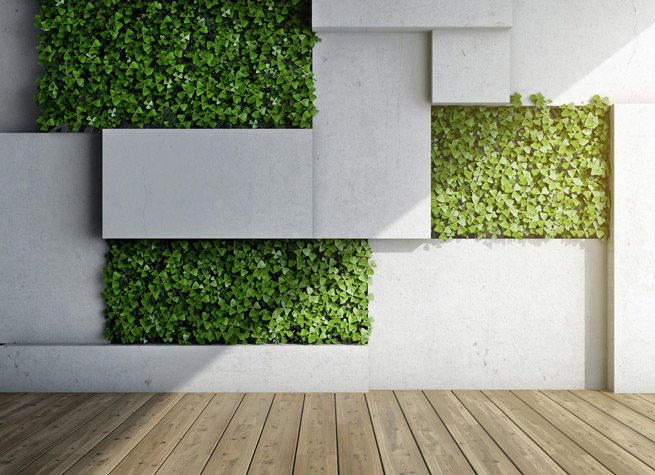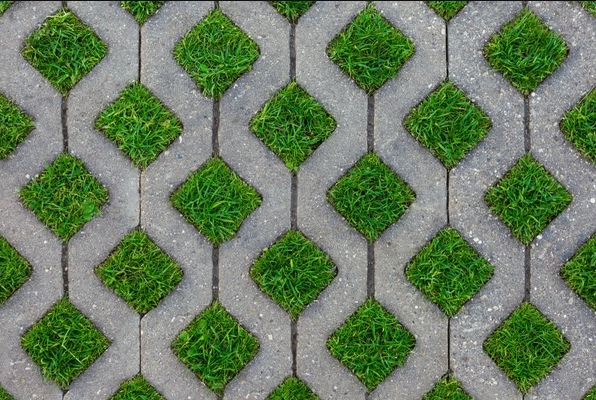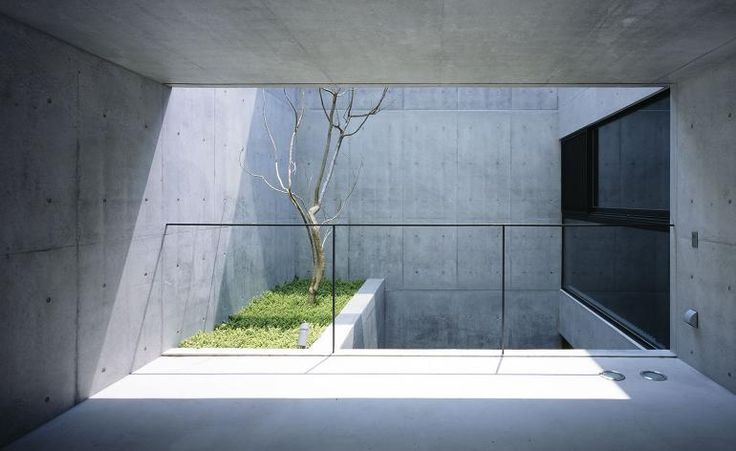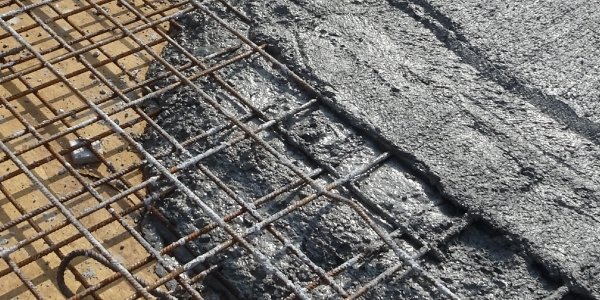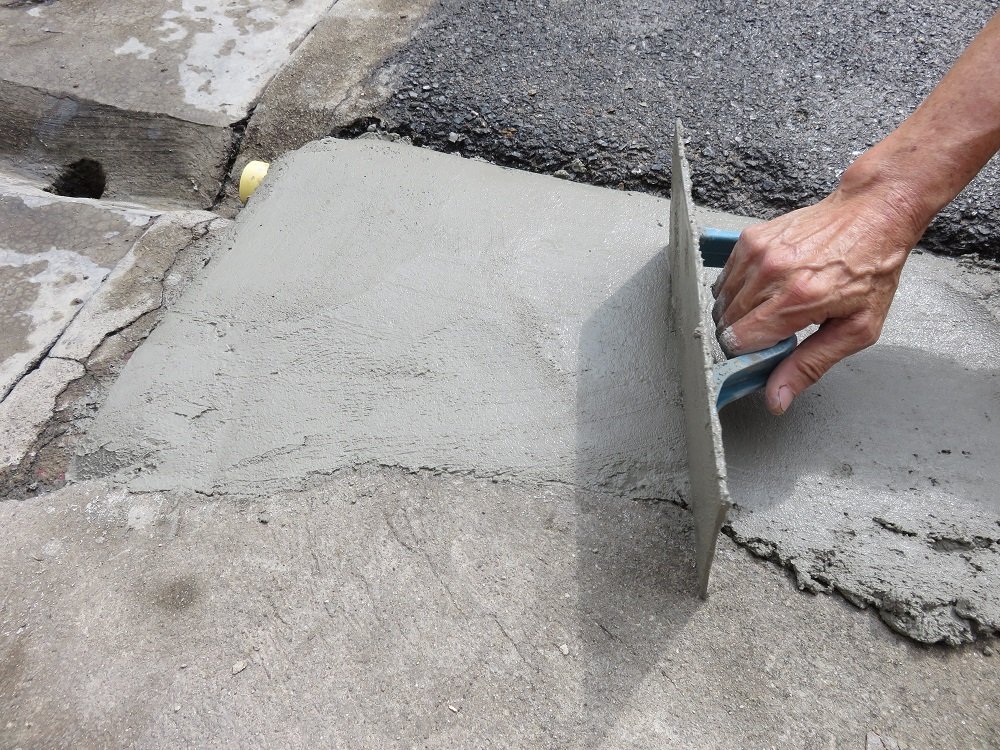Urban Furniture Design in Concrete: A Modern and Durable Approach Urban furniture plays a crucial role in shaping and enhancing the functionality of public spaces in urban environments. In this article, we will explore how concrete urban furniture design offers a modern and durable approach to improving the aesthetics and utility of urban areas. Concrete Versatility in Urban Design Concrete is a versatile material that lends itself to a wide range of applications in urban design. From benches and tables to planters and sculptures, concrete can be adapted to a variety of shapes and styles to meet the specific needs of each urban space. Durability and Resistance Concrete urban furniture is known for its durability and resistance to weather conditions and daily wear and tear. Unlike other materials such as wood or metal, concrete is less susceptible to corrosion, rot, and vandalism, making it an ideal choice for public spaces. Modern and Aesthetic Design Concrete offers a modern and contemporary look that blends well with urban aesthetics. Its minimalist appearance and ability to adapt to custom designs allow for the creation of furniture pieces that complement and enhance the urban environment. Integration of Functionality In addition to its aesthetic appeal, concrete urban furniture can be designed to offer optimal functionality in public spaces. Ergonomic benches, smooth-surfaced tables, and planters with drainage systems are just some of the available options to enhance the user experience. Sustainability and Eco-Friendly Concrete is a sustainable and environmentally friendly material, especially when used with recycled aggregates and more efficient production techniques. By choosing concrete urban furniture, cities can reduce their carbon footprint and promote more sustainable design practices. Adaptability and Customization One of the advantages of concrete in urban furniture design is its ability to adapt to different contexts and needs. From small squares to large urban parks, concrete can be customized to meet the specific requirements of each space and community. Maintenance and Care Although concrete is durable, it still requires regular maintenance to preserve its appearance and functionality. Periodic sealing and cleaning are essential to protect urban furniture from the effects of weather and intensive use, ensuring its longevity and good condition over time. Conclusion: Concrete urban furniture design offers a unique combination of durability, functionality, and modern aesthetics that make it an ideal choice for enhancing public spaces in urban environments. With its versatility, resistance, and sustainability, concrete urban furniture is helping shape more attractive, functional, and sustainable cities worldwide. Recents post concrete work sustainable Permeable Concrete: An Ecological Solution for Water Management in Construction #2 However, the quest for innovation in concrete infrastructure has taken center stage, bridging the gap between traditional methods and groundbreaking… Read More Permeable Concrete: An Ecological Solution for Water Management in Construction However, the quest for innovation in concrete infrastructure has taken center stage, bridging the gap between traditional methods and groundbreaking… Read More Innovations in the Use of Transparent Concrete: Exploring Possibilities in Modern Architecture However, the quest for innovation in concrete infrastructure has taken center stage, bridging the gap between traditional methods and groundbreaking… Read More Designing Concrete Vertical Gardens: Merging Nature with Urban Architecture However, the quest for innovation in concrete infrastructure has taken center stage, bridging the gap between traditional methods and groundbreaking… Read More Green Concrete Construction: Reducing the Environmental Impact of Your Projects However, the quest for innovation in concrete infrastructure has taken center stage, bridging the gap between traditional methods and groundbreaking… Read More How to Incorporate Concrete Elements into a Minimalist Design: Practical Tips However, the quest for innovation in concrete infrastructure has taken center stage, bridging the gap between traditional methods and groundbreaking… Read More Load More End of Content.
Permeable Concrete: An Ecological Solution for Water Management in Construction
Permeable Concrete: An Ecological Solution for Water Management in Construction Permeable concrete is an innovative and ecological solution for water management in construction. In this article, we will explore in detail what permeable concrete is, how it works, and what its benefits are for the environment and sustainability. What is Permeable Concrete? Permeable concrete is a type of porous pavement that allows water to pass through it instead of accumulating on the surface. It is composed of a mixture of cement, aggregates, and special additives that create pores in the structure, allowing water to filter through to the underlying soil. How Permeable Concrete Works When it rains, the water that falls on permeable concrete filters through the pores and is absorbed into the soil below. This helps recharge groundwater aquifers, reduces surface runoff, and prevents soil erosion, thus contributing to more sustainable water management. Environmental Benefits The use of permeable concrete offers several significant environmental benefits. It reduces the risk of flooding by allowing water to infiltrate the soil instead of pooling on the surface, and it helps improve water quality by filtering out pollutants and sediments before they reach water bodies. Urban Drainage Improvement Permeable concrete is especially useful in urban environments where soil sealing has increased surface runoff and the risk of flooding. By providing a permeable surface, it helps restore the natural balance of the water cycle and reduces the burden on urban drainage systems. Reduction of Urban Heat Island Effect Another benefit of permeable concrete is its ability to reduce the urban heat island effect by absorbing and retaining less heat than conventional pavement. This helps mitigate excessive heating in urban areas and creates cooler and more comfortable environments for residents. Applications in Landscaping and Urban Design Permeable concrete can be used in a variety of landscaping and urban design applications, including sidewalks, trails, plazas, parking lots, and patios. Its ability to combine functionality with sustainability makes it ideal for sustainable urban development projects. Maintenance Considerations While permeable concrete requires minimal maintenance compared to conventional pavement, it is important to conduct periodic inspections and cleanings to ensure its proper functioning. This may include debris removal and cleaning of pores to maintain pavement permeability. Conclusion: Permeable concrete offers an ecological and sustainable solution for water management in construction, helping to reduce the risk of flooding, improve water quality, and mitigate the urban heat island effect. With its numerous environmental benefits and versatility in urban design applications, permeable concrete is gaining popularity as a more sustainable alternative to conventional pavement. Recents post concrete work sustainable Innovations in the Use of Transparent Concrete: Exploring Possibilities in Modern Architecture #2 However, the quest for innovation in concrete infrastructure has taken center stage, bridging the gap between traditional methods and groundbreaking… Read More Innovations in the Use of Transparent Concrete: Exploring Possibilities in Modern Architecture However, the quest for innovation in concrete infrastructure has taken center stage, bridging the gap between traditional methods and groundbreaking… Read More Designing Concrete Vertical Gardens: Merging Nature with Urban Architecture However, the quest for innovation in concrete infrastructure has taken center stage, bridging the gap between traditional methods and groundbreaking… Read More Green Concrete Construction: Reducing the Environmental Impact of Your Projects However, the quest for innovation in concrete infrastructure has taken center stage, bridging the gap between traditional methods and groundbreaking… Read More How to Incorporate Concrete Elements into a Minimalist Design: Practical Tips However, the quest for innovation in concrete infrastructure has taken center stage, bridging the gap between traditional methods and groundbreaking… Read More Benefits of Self-Leveling Concrete: Facilitating Installation on Uneven Surfaces However, the quest for innovation in concrete infrastructure has taken center stage, bridging the gap between traditional methods and groundbreaking… Read More Load More End of Content.
Innovations in the Use of Transparent Concrete: Exploring Possibilities in Modern Architecture
Innovations in the Use of Transparent Concrete: Exploring Possibilities in Modern Architecture Transparent concrete is an exciting innovation in the field of architecture and construction, combining the strength and durability of concrete with the transparency of glass. In this article, we will explore the latest innovations in the use of transparent concrete and the possibilities it offers in modern architecture. Nanoparticle Technology One of the latest innovations in transparent concrete development involves the use of nanoparticles to enhance its translucency. These nanoparticles allow light to pass through the concrete, creating stunning visual effects and opening up new possibilities in architectural design. Interior Design Applications Transparent concrete offers a unique alternative for interior design, allowing for the creation of walls, floors, and structural elements that let natural light through. This can help improve lighting and create brighter, more welcoming interior spaces. Façade Design Transparent concrete facades offer a modern and contemporary aesthetic to buildings while providing protection against the elements and improved energy efficiency. The ability to allow natural light through can reduce the need for artificial lighting and enhance the building’s energy efficiency. Decorative Elements Transparent concrete can also be used to create unique decorative elements such as room dividers, furniture, and fixtures. Its combination of strength and transparency makes it ideal for adding a touch of style and modernity to any space. Sustainability and Energy Efficiency The use of transparent concrete in modern architecture can also contribute to the sustainability and energy efficiency of buildings. By allowing more natural light to pass through, the need for artificial lighting is reduced, which in turn can lower energy consumption and associated carbon emissions. Developments in Research and Development Research and development in the field of transparent concrete are constantly evolving, with new advancements and discoveries expanding the possibilities of its use in architecture and construction. Future developments are expected to further improve its performance and versatility. Integration with Emerging Technologies Transparent concrete is also increasingly being integrated with emerging technologies such as smart lighting systems and integrated solar panels. This integration can enhance the functionality and performance of buildings while providing innovative solutions to current construction challenges. Conclusion: Transparent concrete represents an exciting frontier in architecture and construction, offering a unique combination of strength, durability, and transparency. With continuous advancements in research and development, the use of transparent concrete in modern architecture is poised to grow and expand, offering new possibilities and creative opportunities for designers, architects, and builders. Recents post concrete work sustainable Designing Concrete Vertical Gardens: Merging Nature with Urban Architecture #2 However, the quest for innovation in concrete infrastructure has taken center stage, bridging the gap between traditional methods and groundbreaking… Read More Designing Concrete Vertical Gardens: Merging Nature with Urban Architecture However, the quest for innovation in concrete infrastructure has taken center stage, bridging the gap between traditional methods and groundbreaking… Read More Green Concrete Construction: Reducing the Environmental Impact of Your Projects However, the quest for innovation in concrete infrastructure has taken center stage, bridging the gap between traditional methods and groundbreaking… Read More How to Incorporate Concrete Elements into a Minimalist Design: Practical Tips However, the quest for innovation in concrete infrastructure has taken center stage, bridging the gap between traditional methods and groundbreaking… Read More Benefits of Self-Leveling Concrete: Facilitating Installation on Uneven Surfaces However, the quest for innovation in concrete infrastructure has taken center stage, bridging the gap between traditional methods and groundbreaking… Read More How to Choose the Right Type of Concrete for Your Project: A Complete Guide However, the quest for innovation in concrete infrastructure has taken center stage, bridging the gap between traditional methods and groundbreaking… Read More Load More End of Content.
Designing Concrete Vertical Gardens: Merging Nature with Urban Architecture
Designing Concrete Vertical Gardens: Merging Nature with Urban Architecture Concrete vertical gardens are an innovative way to integrate nature into the urban environment, utilizing vertical space to create green oases amidst the concrete jungle. In this article, we will explore how to design and construct concrete vertical gardens to merge nature with urban architecture. Selection of Suitable Plants The first step in designing a concrete vertical garden is to select plants suitable for the environment. Choose plants that are resilient, low-maintenance, and capable of growing in vertical conditions, such as ferns, succulents, and climbing plants. Space Design and Planning Before construction begins, it’s important to design and plan the vertical garden space. This includes determining the location, size, and layout of the concrete structures, as well as the distribution of plants to create a visually appealing and functional design. Construction of Concrete Structure Once the design is complete, the construction of the concrete structure can proceed. This may involve installing prefabricated concrete panels or creating concrete structures on-site, depending on the project’s needs and preferences. Substrate Preparation and Planting After completing the concrete structure, prepare the substrate for planting. Use a lightweight, well-draining substrate, ideally designed specifically for vertical gardens. Once the substrate is prepared, plants can be planted according to the previously established design. Automated Irrigation System Concrete vertical gardens require an appropriate irrigation system to ensure that plants receive the right amount of water. Automated irrigation systems can be installed to distribute water evenly and efficiently along the vertical structure. Regular Maintenance To ensure the health and growth of plants, regular maintenance of the vertical garden is important. This may include pruning plants, controlling pests and diseases, and fertilizing as needed to promote healthy growth. Environmental and Aesthetic Benefits Concrete vertical gardens not only provide environmental benefits by improving air quality and reducing pollution but also add beauty and vitality to urban spaces. Their presence can enhance the emotional and mental well-being of city residents and visitors. Conclusion: Concrete vertical gardens offer an innovative and sustainable way to integrate nature into densely populated urban environments. By merging architecture with vegetation, these gardens create green spaces that are not only aesthetically pleasing but also beneficial for the environment and the quality of life of those who enjoy them. Recents post concrete work sustainable Green Concrete Construction: Reducing the Environmental Impact of Your Projects #2 However, the quest for innovation in concrete infrastructure has taken center stage, bridging the gap between traditional methods and groundbreaking… Read More Green Concrete Construction: Reducing the Environmental Impact of Your Projects However, the quest for innovation in concrete infrastructure has taken center stage, bridging the gap between traditional methods and groundbreaking… Read More How to Incorporate Concrete Elements into a Minimalist Design: Practical Tips However, the quest for innovation in concrete infrastructure has taken center stage, bridging the gap between traditional methods and groundbreaking… Read More Benefits of Self-Leveling Concrete: Facilitating Installation on Uneven Surfaces However, the quest for innovation in concrete infrastructure has taken center stage, bridging the gap between traditional methods and groundbreaking… Read More How to Choose the Right Type of Concrete for Your Project: A Complete Guide However, the quest for innovation in concrete infrastructure has taken center stage, bridging the gap between traditional methods and groundbreaking… Read More 7 Keys for Effective Concrete Maintenance at Home However, the quest for innovation in concrete infrastructure has taken center stage, bridging the gap between traditional methods and groundbreaking… Read More Load More End of Content.
Green Concrete Construction: Reducing the Environmental Impact of Your Projects
Green Concrete Construction: Reducing the Environmental Impact of Your Projects In an increasingly environmentally conscious world, sustainable construction has become a priority for many projects. Green concrete, a more eco-friendly alternative to conventional concrete, is gaining popularity due to its environmental benefits. In this article, we will explore how construction with green concrete can help reduce the environmental impact of your construction projects. Sustainable Materials Green concrete is produced using sustainable materials such as recycled aggregates, fly ash, and blast furnace slag. These materials help reduce the demand for natural resources and minimize the environmental impact associated with the extraction and processing of raw materials. Carbon Emissions Reduction The production of conventional concrete is one of the major sources of carbon emissions in the construction industry. Green concrete uses more efficient production techniques and lower environmental impact materials, helping to reduce carbon emissions associated with construction. Increased Durability and Longevity Green concrete tends to be more durable and resilient than conventional concrete, meaning it requires less maintenance and repairs over its lifespan. This reduces the amount of materials and energy needed to maintain and replace concrete structures, contributing to more sustainable construction. Improvement of Energy Efficiency Green concrete can help improve the energy efficiency of buildings by providing greater thermal mass and thermal stability. This helps regulate indoor temperatures, reducing the need for heating and cooling and, in turn, energy consumption. Waste Management and Recycling During construction with green concrete, waste management and recycling practices can be implemented to further reduce environmental impact. Concrete waste can be crushed and recycled as aggregates for new concrete batches, minimizing the amount of waste sent to landfills. Certifications and Regulations There are several certifications and regulations that promote and support construction with green concrete, such as LEED (Leadership in Energy and Environmental Design) and the eco-friendly materials rating system. Compliance with these regulations can help projects gain recognition and reputation for their commitment to sustainability. Education and Awareness Finally, construction with green concrete also involves educating and raising awareness among all parties involved in the project, from architects and engineers to contractors and owners. Promoting a culture of sustainable construction can inspire positive changes throughout the construction industry. Conclusion: Construction with green concrete offers a number of significant benefits for the environment and society as a whole. By adopting more sustainable construction practices and using lower environmental impact materials, we can reduce the negative impact of construction on the environment and work towards a more sustainable and planet-friendly future. Recents post concrete work sustainable How to Incorporate Concrete Elements into a Minimalist Design: Practical Tips #2 However, the quest for innovation in concrete infrastructure has taken center stage, bridging the gap between traditional methods and groundbreaking… Read More How to Incorporate Concrete Elements into a Minimalist Design: Practical Tips However, the quest for innovation in concrete infrastructure has taken center stage, bridging the gap between traditional methods and groundbreaking… Read More Benefits of Self-Leveling Concrete: Facilitating Installation on Uneven Surfaces However, the quest for innovation in concrete infrastructure has taken center stage, bridging the gap between traditional methods and groundbreaking… Read More How to Choose the Right Type of Concrete for Your Project: A Complete Guide However, the quest for innovation in concrete infrastructure has taken center stage, bridging the gap between traditional methods and groundbreaking… Read More 7 Keys for Effective Concrete Maintenance at Home However, the quest for innovation in concrete infrastructure has taken center stage, bridging the gap between traditional methods and groundbreaking… Read More Concrete in the Kitchen: Simple Steps to Create a Durable and Stylish Countertop However, the quest for innovation in concrete infrastructure has taken center stage, bridging the gap between traditional methods and groundbreaking… Read More Load More End of Content.
How to Incorporate Concrete Elements into a Minimalist Design: Practical Tips
How to Incorporate Concrete Elements into a Minimalist Design: Practical Tips Minimalist design is a popular trend in architecture and interior design characterized by simplicity, cleanliness, and functionality. Concrete, with its industrial aesthetic and versatility, lends itself perfectly to this style. In this article, we will explore how you can incorporate concrete elements into a minimalist design with some practical tips. Finish Selection When incorporating concrete into a minimalist design, it’s important to choose finishes that complement the clean and simple aesthetic of the style. Opt for smooth and polished surfaces that reflect light and create a sense of spaciousness in the space. Clean Lines Design Minimalist design relies on clean lines and simple shapes. When incorporating concrete elements, look for pieces with simple geometric shapes and straight lines that seamlessly integrate into the overall design of the space. Strategic Use of Color While concrete is known for its neutral gray tone, you can strategically play with color to add visual interest to the space. Consider adding pigments or dyes to the concrete to create subtle tones that complement the color palette of the minimalist design. Natural Textures Concrete can offer a variety of textures, from smooth surfaces to rough or textured finishes. Experiment with different textures to add depth and dimension to the design without compromising the simplicity of the minimalist style. Integration of Functional Elements In a minimalist design, each element should have a specific function and contribute to the overall functionality of the space. When incorporating concrete elements, ensure that they also serve a practical function, such as built-in shelves, integrated benches, or kitchen countertops. Proper Lighting Lighting plays a crucial role in minimalist design as it can highlight key elements and create cozy atmospheres. Consider using recessed lighting or pendant fixtures to highlight concrete elements and create interesting visual effects in the space. Maintenance and Care Finally, it’s important to consider the maintenance and care of concrete elements in a minimalist design. Ensure that concrete surfaces are properly sealed and protected to prevent stains and damage, and follow a regular cleaning and maintenance regimen to keep the design looking impeccable. Conclusion: Incorporating concrete elements into a minimalist design can add a touch of modernity and sophistication to the space while maintaining the characteristic simplicity and functionality of the style. With these practical tips, you can create a minimalist and elegant environment that highlights the beauty and versatility of concrete in interior design. Recents post concrete work sustainable Benefits of Self-Leveling Concrete: Facilitating Installation on Uneven Surfaces #2 However, the quest for innovation in concrete infrastructure has taken center stage, bridging the gap between traditional methods and groundbreaking… Read More Benefits of Self-Leveling Concrete: Facilitating Installation on Uneven Surfaces However, the quest for innovation in concrete infrastructure has taken center stage, bridging the gap between traditional methods and groundbreaking… Read More How to Choose the Right Type of Concrete for Your Project: A Complete Guide However, the quest for innovation in concrete infrastructure has taken center stage, bridging the gap between traditional methods and groundbreaking… Read More 7 Keys for Effective Concrete Maintenance at Home However, the quest for innovation in concrete infrastructure has taken center stage, bridging the gap between traditional methods and groundbreaking… Read More Concrete in the Kitchen: Simple Steps to Create a Durable and Stylish Countertop However, the quest for innovation in concrete infrastructure has taken center stage, bridging the gap between traditional methods and groundbreaking… Read More Lighting up with Concrete: Strategies to Harness Natural Light Indoors However, the quest for innovation in concrete infrastructure has taken center stage, bridging the gap between traditional methods and groundbreaking… Read More Load More End of Content.
Benefits of Self-Leveling Concrete: Facilitating Installation on Uneven Surfaces
Benefits of Self-Leveling Concrete: Facilitating Installation on Uneven Surfaces Self-leveling concrete is a popular choice in construction due to its ability to automatically level itself and provide a flat and uniform surface. In this article, we will explore the numerous benefits of using self-leveling concrete in construction projects, especially on uneven surfaces. Automatic Leveling One of the main advantages of self-leveling concrete is its ability to automatically level itself. This eliminates the need for manually leveling the surface, saving time and labor during installation. Improved Flatness Self-leveling concrete provides an extremely flat and uniform surface, which is ideal for applications requiring a solid and leveled base. This ensures even distribution of loads and an aesthetically pleasing appearance. Ease of Installation Compared to other types of concrete, self-leveling concrete is easier to install. It is simply poured onto the surface and spread evenly, eliminating the need for specialized tools or complicated techniques. Waste Reduction Due to its ability to level and spread evenly, self-leveling concrete helps reduce waste during installation. This can result in significant savings in material and labor costs. Application Versatility Self-leveling concrete can be used in a wide variety of applications, including commercial and industrial floors, exterior pavements, and repairs of uneven surfaces. Its versatility makes it ideal for a variety of construction projects. Quick Curing Time Self-leveling concrete generally has faster curing times compared to other types of concrete. This means that treated areas can be made available for use more quickly, speeding up the construction process. Improved Finishing Quality Due to its ability to level itself and provide a smooth and uniform surface, self-leveling concrete improves the quality of the final finish. This results in a more attractive and professional appearance for the project. Conclusion: Self-leveling concrete offers a number of significant benefits that make it an attractive option for a variety of construction projects. Its ability to automatically level itself, improve flatness, facilitate installation, and offer quick curing times make it ideal for uneven surfaces and other applications where a solid and uniform base is required. Recents post concrete work sustainable How to Choose the Right Type of Concrete for Your Project: A Complete Guide #2 However, the quest for innovation in concrete infrastructure has taken center stage, bridging the gap between traditional methods and groundbreaking… Read More How to Choose the Right Type of Concrete for Your Project: A Complete Guide However, the quest for innovation in concrete infrastructure has taken center stage, bridging the gap between traditional methods and groundbreaking… Read More 7 Keys for Effective Concrete Maintenance at Home However, the quest for innovation in concrete infrastructure has taken center stage, bridging the gap between traditional methods and groundbreaking… Read More Concrete in the Kitchen: Simple Steps to Create a Durable and Stylish Countertop However, the quest for innovation in concrete infrastructure has taken center stage, bridging the gap between traditional methods and groundbreaking… Read More Lighting up with Concrete: Strategies to Harness Natural Light Indoors However, the quest for innovation in concrete infrastructure has taken center stage, bridging the gap between traditional methods and groundbreaking… Read More Building Comfort: Tips for Integrating Concrete in a Cozy Home However, the quest for innovation in concrete infrastructure has taken center stage, bridging the gap between traditional methods and groundbreaking… Read More Load More End of Content.
How to Choose the Right Type of Concrete for Your Project: A Complete Guide
How to Choose the Right Type of Concrete for Your Project: A Complete Guide Selecting the appropriate type of concrete is crucial for the success of any construction or renovation project. With a wide variety of options available, from ready-mix concrete to self-leveling concrete, it can be overwhelming to choose the most suitable one. In this complete guide, we will explore the key factors to consider when choosing the type of concrete for your project. Understanding Your Needs The first step in choosing the right type of concrete is understanding the specific needs of your project. Will it be used indoors or outdoors? Is additional strength required? What kind of finish are you looking for? These questions will help determine which features are most important to you. Project Type The type of project you are undertaking will influence the type of concrete you need. For example, a paving project will require different concrete than that used in constructing a slab for a garage. It’s important to select concrete that suits the specific demands of your project. Strength and Durability The strength and durability of the concrete are crucial factors to consider, especially if it will be used in heavy-duty applications or outdoor environments. Refer to manufacturer specifications to determine the compressive strength and durability of the concrete you are considering. Manageability and Workability The ease of handling and workability of the concrete are also important, especially if you are doing the work yourself or hiring a construction team. Choose concrete that is easy to mix, pour, and manipulate to ensure a smooth construction process. Finish and Appearance The finish and appearance of the concrete are important aesthetic aspects to consider, especially if it will be used indoors or in visible areas. There are a variety of options available, from polished concrete to stamped concrete, each with its own unique look. Environmental Considerations It’s also important to consider the environmental impact of the concrete you are using. Look for options that are environmentally friendly and minimize the use of natural resources and greenhouse gas emissions during production. Consultation with a Professional If you are dealing with a complex project or are unsure which type of concrete is best for your needs, don’t hesitate to consult with a construction professional. They can provide expert guidance and personalized recommendations for your specific project. Conclusion: Choosing the right type of concrete is essential for the success of any construction or renovation project. By carefully considering your needs, project type, strength and durability, manageability and workability, finish and appearance, environmental considerations, and consulting with a professional, you can make an informed decision that ensures optimal results for your project. Recents post concrete work sustainable 7 Keys for Effective Concrete Maintenance at Home #2 However, the quest for innovation in concrete infrastructure has taken center stage, bridging the gap between traditional methods and groundbreaking… Read More 7 Keys for Effective Concrete Maintenance at Home However, the quest for innovation in concrete infrastructure has taken center stage, bridging the gap between traditional methods and groundbreaking… Read More Concrete in the Kitchen: Simple Steps to Create a Durable and Stylish Countertop However, the quest for innovation in concrete infrastructure has taken center stage, bridging the gap between traditional methods and groundbreaking… Read More Lighting up with Concrete: Strategies to Harness Natural Light Indoors However, the quest for innovation in concrete infrastructure has taken center stage, bridging the gap between traditional methods and groundbreaking… Read More Building Comfort: Tips for Integrating Concrete in a Cozy Home However, the quest for innovation in concrete infrastructure has taken center stage, bridging the gap between traditional methods and groundbreaking… Read More Concrete in the Garden: Creative Ideas to Beautify Your Outdoor Space However, the quest for innovation in concrete infrastructure has taken center stage, bridging the gap between traditional methods and groundbreaking… Read More Load More End of Content.
7 Keys for Effective Concrete Maintenance at Home
7 Keys for Effective Concrete Maintenance at Home Concrete is a durable and versatile material used in a variety of home applications, from pavements to structures. However, to ensure its longevity and maintain its aesthetic appearance, it’s crucial to perform proper maintenance. In this article, we’ll explore seven important keys for effective concrete maintenance at home. Regular Inspection:The first key to effective concrete maintenance is conducting regular inspections. This involves visually checking the condition of the concrete for cracks, stains, or other signs of deterioration. Periodic inspections can help identify problems early and take preventive measures. Deep Cleaning:Deep cleaning is essential to keep concrete in good condition. Different cleaning methods such as pressure washing or specific concrete cleaners can be used to remove dirt, stains, and residue buildup. Regular Sealing:Sealing concrete is an important measure to protect it against moisture, chemicals, and other elements that may damage it. Applying a high-quality concrete sealer regularly can help prolong its lifespan and maintain its original appearance. Timely Crack Repair:Cracks in concrete can worsen over time if not properly addressed. It’s crucial to repair them as soon as they’re detected to prevent further damage. Depending on the size and severity of the cracks, they may require different repair methods such as crack fillers or concrete patches. Weather Protection:Concrete can be affected by weather conditions, especially rain, snow, and sun exposure. To protect it against these elements, protective coatings can be applied or appropriate waterproofing methods can be used. Expansion Joint Maintenance:Expansion joints are important to allow for the expansion and contraction of concrete due to changes in temperature and humidity. It’s crucial to maintain these joints in good condition by filling or sealing them as needed to prevent crack formation. Professional Consultation:In some cases, consulting a professional may be necessary for proper concrete maintenance at home. Concrete experts can offer specific recommendations and customized solutions to keep concrete in optimal condition. Conclusion: Effective concrete maintenance at home is essential to ensure its durability and functionality over time. By following these seven keys, homeowners can protect their concrete surfaces and keep them in excellent condition for many years. Recents post concrete work sustainable Concrete in the Kitchen: Simple Steps to Create a Durable and Stylish Countertop #2 However, the quest for innovation in concrete infrastructure has taken center stage, bridging the gap between traditional methods and groundbreaking… Read More Concrete in the Kitchen: Simple Steps to Create a Durable and Stylish Countertop However, the quest for innovation in concrete infrastructure has taken center stage, bridging the gap between traditional methods and groundbreaking… Read More Lighting up with Concrete: Strategies to Harness Natural Light Indoors However, the quest for innovation in concrete infrastructure has taken center stage, bridging the gap between traditional methods and groundbreaking… Read More Building Comfort: Tips for Integrating Concrete in a Cozy Home However, the quest for innovation in concrete infrastructure has taken center stage, bridging the gap between traditional methods and groundbreaking… Read More Concrete in the Garden: Creative Ideas to Beautify Your Outdoor Space However, the quest for innovation in concrete infrastructure has taken center stage, bridging the gap between traditional methods and groundbreaking… Read More DIY with Concrete: Creative Projects to Beautify Your Home on a Budget However, the quest for innovation in concrete infrastructure has taken center stage, bridging the gap between traditional methods and groundbreaking… Read More Load More End of Content.
Concrete in the Kitchen: Simple Steps to Create a Durable and Stylish Countertop
Concrete in the Kitchen: Simple Steps to Create a Durable and Stylish Countertop The kitchen is the heart of the home, and the countertop is its centerpiece. When it comes to durability, style, and versatility, concrete countertops are a popular choice among homeowners and designers alike. In this guide, we’ll explore simple steps to create a durable and stylish concrete countertop for your kitchen. From material selection to finishing touches, let’s delve into the world of concrete and discover how it can elevate your kitchen design to new heights. Choosing the Right Concrete Mix: The first step in creating a concrete countertop is selecting the right mix. Opt for a high-quality concrete mix specifically formulated for countertops, as it offers superior strength and durability compared to standard concrete mixes. Consider factors such as aggregate size, admixtures, and color additives to achieve the desired texture, color, and finish for your countertop. Creating the Mold: Once you’ve chosen your concrete mix, it’s time to create the mold for your countertop. Use melamine or plywood to build a form that matches the dimensions and shape of your countertop. Reinforce the mold with rebar or wire mesh to add strength and prevent cracking. Seal the inside of the mold with a release agent to ensure easy removal once the concrete has cured. Pouring and Finishing the Concrete: With the mold in place, it’s time to pour the concrete. Work in small sections, starting from one end of the mold and working your way to the other. Use a trowel to spread the concrete evenly and eliminate any air pockets or voids. Once the mold is filled, use a vibrating tool or rubber mallet to ensure proper consolidation and remove any trapped air bubbles. Finish the surface with a concrete float or trowel to achieve the desired texture and smoothness. Adding Color and Texture: Enhance the visual appeal of your concrete countertop by adding color and texture. Consider using integral pigments or acid stains to create rich, vibrant hues that complement your kitchen decor. Experiment with different aggregates such as glass, stone, or metal to add texture and visual interest to the surface. Be sure to seal the countertop with a food-safe sealer to protect against stains and moisture damage. Sealing and Curing: Once the concrete has cured for at least 24 hours, carefully remove the mold and allow the countertop to continue curing for an additional 7-14 days. During this time, keep the countertop moist by covering it with plastic sheeting or damp towels to prevent cracking and ensure proper hydration. After the curing period, apply multiple coats of a high-quality concrete sealer to protect the surface from stains, heat, and scratches. Conclusion: In conclusion, concrete countertops offer a durable and stylish option for enhancing your kitchen design. By following these simple steps to choose the right mix, create the mold, pour and finish the concrete, add color and texture, and seal and cure the countertop, you can create a stunning focal point that adds beauty and functionality to your kitchen. Embrace the versatility and creativity of concrete and enjoy the timeless elegance it brings to your culinary space. Recents post concrete work sustainable Concrete in the Kitchen: Simple Steps to Create a Durable and Stylish Countertop However, the quest for innovation in concrete infrastructure has taken center stage, bridging the gap between traditional methods and groundbreaking… Read More Lighting up with Concrete: Strategies to Harness Natural Light Indoors However, the quest for innovation in concrete infrastructure has taken center stage, bridging the gap between traditional methods and groundbreaking… Read More Building Comfort: Tips for Integrating Concrete in a Cozy Home However, the quest for innovation in concrete infrastructure has taken center stage, bridging the gap between traditional methods and groundbreaking… Read More Concrete in the Garden: Creative Ideas to Beautify Your Outdoor Space However, the quest for innovation in concrete infrastructure has taken center stage, bridging the gap between traditional methods and groundbreaking… Read More DIY with Concrete: Creative Projects to Beautify Your Home on a Budget However, the quest for innovation in concrete infrastructure has taken center stage, bridging the gap between traditional methods and groundbreaking… Read More Concrete in Interior Design: Tips to Incorporate Industrial Elegance into Your Home However, the quest for innovation in concrete infrastructure has taken center stage, bridging the gap between traditional methods and groundbreaking… Read More Load More End of Content.

